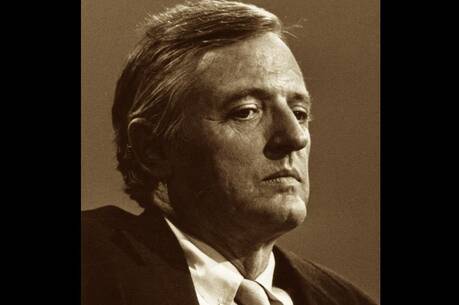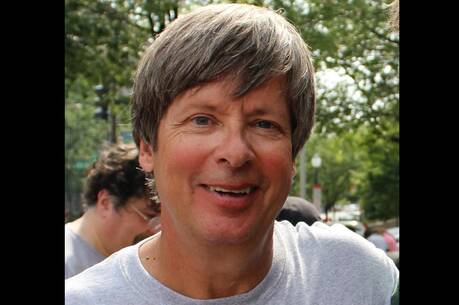For Better Or Worse
Will celibacy be mandatory for future Roman Catholic priests? Or will optional celibacy become the rule, as it is in all the other 20 rites in communion with Rome? Contested questions about celibacy and priesthood are not about to disappear.
Yet it is little known that 80 or so married ordained Latin Rite priests already serve in a fourth of American dioceses—mostly in the Southwest. These married priests have come to the Catholic Church from the Episcopal Church, whose petitions for priesthood as Roman Catholics were made possible in 1980. In June of that year Pope John Paul II finally “opened the door to Rome” by approving the norms for what became known as the pastoral provisions for priests seeking acceptance into the Catholic Church.
What are these married priests like, and how did they come to join the Catholic Church? D. Paul Sullins, a sociologist, who is himself a former Episcopal priest, has provided a careful research study of these priests, their wives and their process of becoming Catholic. Then he gives his own thoughtful reflections on the relation of celibacy, marriage and the secular priesthood. As a good sociologist, Sullins gathers his information from interviews, surveys, other pertinent research studies and relevant church documents. Readers are provided with 47 tables, figures and graphs, many notes and an extensive appendix with more documentation. Responses of these married priests and their wives are compared with those of different cohorts of celibate priests and to surveys of “active laity”—i.e., those Catholics who go to church regularly. Personal interviews provide more insights, along with quoted comments that enliven the narrative.
Sullins confirms the general impression that younger diocesan priests have become more traditional than earlier priests of the 1970s. Today’s priests are more accepting of the status quo, including the celibacy rule. (Of course the 27,000 priests who resigned to marry since the ’70s have voted with their feet.) Yet the converted married priests and their wives are more traditional on contested faith and moral issues than current celibate priests, who in turn are more traditionally orthodox than the “active” laity.
The married priests were in their late 40s and established with families by the time they were became as Roman Catholics priests. They report themselves to be joyfully fulfilled in their priestly life, more than current celibate priests. Although working longer hours, these married priests spend more time in prayer and devotions but have to schedule their workloads to fulfill family obligations.
The priests’ wives also reported themselves to be happy, but less than their husbands. Wives had lost their defined social roles had made sacrifices in disrupting their families and faced financial hardship. Granted, the role of the pastor’s wife in Protestant denominations is known to be difficult, but in Roman Catholic parishes it is nonexistent. Loneliness was often the result. Yet all of these wives fully endorsed and supported their husbands in their decisions. They saw their own religious vocations as supporting the vocation of their husbands. They followed their lead and willingly made the necessary sacrifices. Sullins describes the stresses and subordination of a priest’s wife to her husband’s vocation as similar to that of the wives of corporate business leaders. These marital models were not much influenced by feminism.
In fact, the issue of ordaining women and gays as priests and bishops had been the last straw in pushing these married priests and their wives out of the Episcopal Church. Their traditional theological and moral beliefs had led them to judge that theologically educated men were “intellectual and conscience converts,”’ who after lengthy struggles felt pushed and pulled to follow Newman’s example and “swim the Tiber.” And a heroic swim it appears to have been.
They had to give up assured career achievements, settled social status and financial security for an uncertain future. After petitioning American bishops to sponsor them, they endured arduous interviews, theological tests, psychological examinations of the individual priest’s fitness and of the stability of their marriages. Mounds of bureaucratic paperwork (often inefficiently handled) accompanied complicated negotiations on arrangements for work deployment, family housing and financial arrangements. In an appendix Sullins provides a financial analysis that shows that, contrary to assumptions, married priests are not much more expensive to support than celibate priests in established rectories. But celibates are more available for reassignment by bishops than those with family concerns.
In the end bishops, married priests, wives and families were happy with the general outcomes. The laity and celibate priests in the parishes welcomed the married priests. Occasionally the more traditional views of the new Catholics created tension. Ironically, while the married priests and their wives vigorously asserted that their priestly ministries were equal to, if not more dedicated than that of celibate priests, they did not all endorse a change in the celibacy rules.
In his concluding reflections, Sullins seems to agree with these contradictions. Married priests can serve as effectively as celibate priests and be happier as individuals. But celibacy is better for the church as a whole as a symbol of transcendence. It gives a valuable witness to a secular culture. He sees that a married priesthood has other good values and can work well; but celibates are more available for assignments by their bishops and give a higher form of witness. A celibate priest in a parish can also give witness to marital fidelity and inclusively relate to all as family.
I too agree with the goods of both married and celibate priests. Yet in privileged, comfortable, all-male parish settings with celibacy enforced as a rule, there is a danger that celibates can become a priestly caste who cannot easily relate intimately to parishioners as a family. I see the challenge for the future church to create a priesthood that can include the complementary goods of marriage and celibacy.
For full disclosure, I report my own conversion to Roman Catholicism, which makes me very sympathetic to the decisions of these married priests. I too have found joy in the fullness of Roman Catholicism and its authoritative, rich tradition. As a “conscience” and “intellectual” convert, I too was inspired by the great Cardinal Newman. I was most inspired by his thoughts on conscience and the evolution of doctrine through experiences of change.
Christianity’s God is revealed as “One Who Makes All Thngs New.” The Second Vatican Council’s proclamation of an ever reforming church leads me to a Gospel feminism that believes in the possibility of ordaining women. Here I have to disagree with Sullins and his good company of admirable married priests. I am grateful to them for their ministry and their faithful commitment to the Roman Catholic Church. More subversively, I hope that their good example as married priests will have more influence in the future church than their conservative ideals.
This article also appeared in print, under the headline “For Better Or Worse,” in the January 4-11, 2016, issue.








